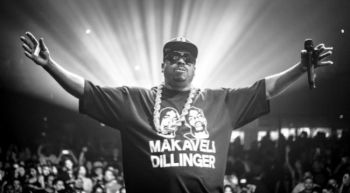
Source: Tupac Shakur 1996 MTV Music Awards Featuring: Tupac Shakur Where: New York City, Nevada, United States When: 04 Sep 1996 Credit: Chris Connor / WENN
Tupac’s murder continues to be a topic of conversation almost 22 years after his passing. With new information uncovered regarding who did the crime, LVPD is being asked to get on their job.
This year USA Network’s Unsolved: The Murders Of Tupac And The Notorious B.I.G. detailed the hits of these two Rap legends giving more insight into what led up to their respective demises.
The series put a spotlight on Duane Keith Davis and his role in the murder of Shakur. “Keffe D” is to have driven the white Cadillac which pulled up on the Deathrow Records entourage on the Las Vegas strip and fired shots killing the “I Get Around” Rapper.
BET got even more access to Davis with their Deathrow Chronicles and got him to confirm himself as an accessory to murder. “I was a Compton kingpin, drug dealer, I’m the only one alive who can really tell you story about the Tupac killing. People have been pursuing me for 20 years, I’m coming out now because I have cancer. And I have nothing else to lose. All I care about now is the truth” he revealed.
Keffe is the uncle to Orlando Anderson, the Crip gang member who Tupac infamously beat up at the MGM Grand Casino hours prior to his killing. In a taped confession to police recorded in the 90’s, Davis admitted that Anderson, AKA Baby Lane, did fire the shots that mortally wounded Shakur.
With this news a petition on Change.org has been started calling for Las Vegas authorities to investigate the lead.
Unfortunately, Davis’ admission of guilt granted him immunity from persecution. This confession, Sean “Diddy” Combs alleged involvement and who really killed The Notorious B.I.G. are revealed in Murder Rap, a book turned movie by former LAPD investigator Greg Kading.
Via WJLA
—
Photo: WENN
Tupac Murder Confession Sparks Calls For Las Vegas Police To Reopen Case was originally published on hiphopwired.com















